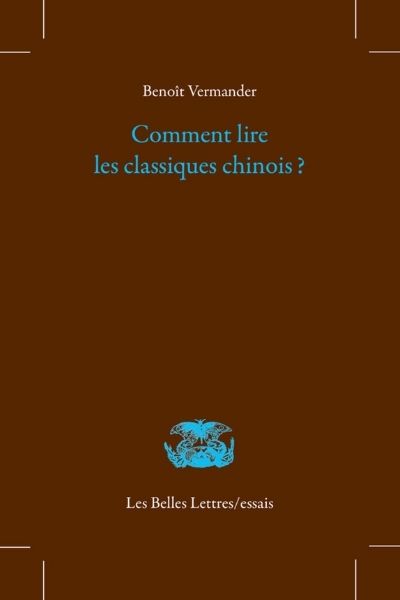[fusion_builder_container type= »flex » hundred_percent= »no » equal_height_columns= »no » menu_anchor= » » hide_on_mobile= »small-visibility,medium-visibility,large-visibility » class= » » id= » » background_color= » » background_image= » » background_position= »center center » background_repeat= »no-repeat » fade= »no » background_parallax= »none » parallax_speed= »0.3″ video_mp4= » » video_webm= » » video_ogv= » » video_url= » » video_aspect_ratio= »16:9″ video_loop= »yes » video_mute= »yes » overlay_color= » » video_preview_image= » » border_color= » » border_style= »solid » padding_top= » » padding_bottom= » » padding_left= » » padding_right= » »][fusion_builder_row][fusion_builder_column type= »1_1″ layout= »1_1″ background_position= »left top » background_color= » » border_color= » » border_style= »solid » border_position= »all » spacing= »yes » background_image= » » background_repeat= »no-repeat » padding_top= » » padding_right= » » padding_bottom= » » padding_left= » » margin_top= »0px » margin_bottom= »0px » class= » » id= » » animation_type= » » animation_speed= »0.3″ animation_direction= »left » hide_on_mobile= »small-visibility,medium-visibility,large-visibility » center_content= »no » last= »true » min_height= » » hover_type= »none » link= » » border_sizes_top= » » border_sizes_bottom= » » border_sizes_left= » » border_sizes_right= » » first= »true »][fusion_text columns= » » column_min_width= » » column_spacing= » » rule_style= » » rule_size= » » rule_color= » » hue= » » saturation= » » lightness= » » alpha= » » content_alignment_medium= » » content_alignment_small= » » content_alignment= » » hide_on_mobile= »small-visibility,medium-visibility,large-visibility » sticky_display= »normal,sticky » class= » » id= » » margin_top= » » margin_right= » » margin_bottom= » » margin_left= » » fusion_font_family_text_font= » » fusion_font_variant_text_font= » » font_size= » » line_height= » » letter_spacing= » » text_transform= » » text_color= » » animation_type= » » animation_direction= »left » animation_speed= »0.3″ animation_offset= » »]
Comment lire les classiques chinois ? Comment les lire pour eux-mêmes, mais aussi avec les questions qui sont nôtres ? Cet ouvrage présente l’ensemble de la production textuelle chinoise antique comme la variété des approches par lesquelles on l’interprète.
 Il montre l’unité organique de ce massif textuel, construite autour d’une appréhension réflexive de nos expériences corporelles, et il détaille les débats qui le traversent, lesquels restent largement les nôtres : le marquage de la différence des sexes, des générations et des classes ; la manière dont se construit et se conteste l’ordre symbolique ; la maîtrise politique du langage. Une dernière partie révèle la cohérence et la sophistication des structures de composition qui gouvernent nos textes. Leur mise en évidence renouvelle la compréhension du Laozi, du Zhuangzi ou encore des Entretiens de Confucius. L’épilogue de l’ouvrage trace la voie d’une lecture partagée des classiques autour desquels l’humanité se rencontre, se déchire, et continue à se construire.
Il montre l’unité organique de ce massif textuel, construite autour d’une appréhension réflexive de nos expériences corporelles, et il détaille les débats qui le traversent, lesquels restent largement les nôtres : le marquage de la différence des sexes, des générations et des classes ; la manière dont se construit et se conteste l’ordre symbolique ; la maîtrise politique du langage. Une dernière partie révèle la cohérence et la sophistication des structures de composition qui gouvernent nos textes. Leur mise en évidence renouvelle la compréhension du Laozi, du Zhuangzi ou encore des Entretiens de Confucius. L’épilogue de l’ouvrage trace la voie d’une lecture partagée des classiques autour desquels l’humanité se rencontre, se déchire, et continue à se construire.
Dans la presse
« Comment lire les classiques chinois ? », de Benoît Vermander, la chronique « philosophie » de Roger-Pol Droit : lire l’article du 08/07/22 du Monde
P. Benoît Vermander sj, Comment lire les Classiques chinois ?, Éditions Les Belles Lettres, juin 2022, 336 p.
[/fusion_text][fusion_title title_type= »text » rotation_effect= »bounceIn » display_time= »1200″ highlight_effect= »circle » loop_animation= »off » highlight_width= »9″ highlight_top_margin= »0″ before_text= » » rotation_text= » » highlight_text= » » after_text= » » title_link= »off » link_url= » » link_target= »_self » hide_on_mobile= »small-visibility,medium-visibility,large-visibility » sticky_display= »normal,sticky » class= » » id= » » content_align_medium= » » content_align_small= » » content_align= »left » size= »1″ animated_font_size= » » fusion_font_family_title_font= » » fusion_font_variant_title_font= » » font_size= » » line_height= » » letter_spacing= » » text_transform= » » text_color= » » hue= » » saturation= » » lightness= » » alpha= » » animated_text_color= » » text_shadow= »no » text_shadow_vertical= » » text_shadow_horizontal= » » text_shadow_blur= »0″ text_shadow_color= » » margin_top_medium= » » margin_right_medium= » » margin_bottom_medium= » » margin_left_medium= » » margin_top_small= » » margin_right_small= » » margin_bottom_small= » » margin_left_small= » » margin_top= » » margin_right= » » margin_bottom= » » margin_left= » » margin_top_mobile= » » margin_bottom_mobile= » » gradient_font= »no » gradient_start_color= » » gradient_end_color= » » gradient_start_position= »0″ gradient_end_position= »100″ gradient_type= »linear » radial_direction= »center center » linear_angle= »180″ highlight_color= » » style_type= »default » sep_color= » » link_color= » » link_hover_color= » » animation_type= » » animation_direction= »left » animation_speed= »0.3″ animation_offset= » »]
Découvrir d’autres nouveautés littéraires
[/fusion_title][fusion_recent_posts layout= »default » picture_size= »auto » hover_type= »none » columns= »3″ number_posts= »6″ post_status= » » offset= »0″ pull_by= »category » cat_slug= »livre-new » exclude_cats= » » tag_slug= » » exclude_tags= » » thumbnail= »yes » title= »yes » meta= »no » meta_author= »no » meta_categories= »no » meta_date= »yes » meta_comments= »yes » meta_tags= »no » content_alignment= » » excerpt= »no » excerpt_length= »35″ strip_html= »yes » scrolling= »pagination » hide_on_mobile= »small-visibility,medium-visibility,large-visibility » class= » » id= » » animation_type= » » animation_direction= »left » animation_speed= »0.3″ animation_offset= » » /][/fusion_builder_column][/fusion_builder_row][/fusion_builder_container]
